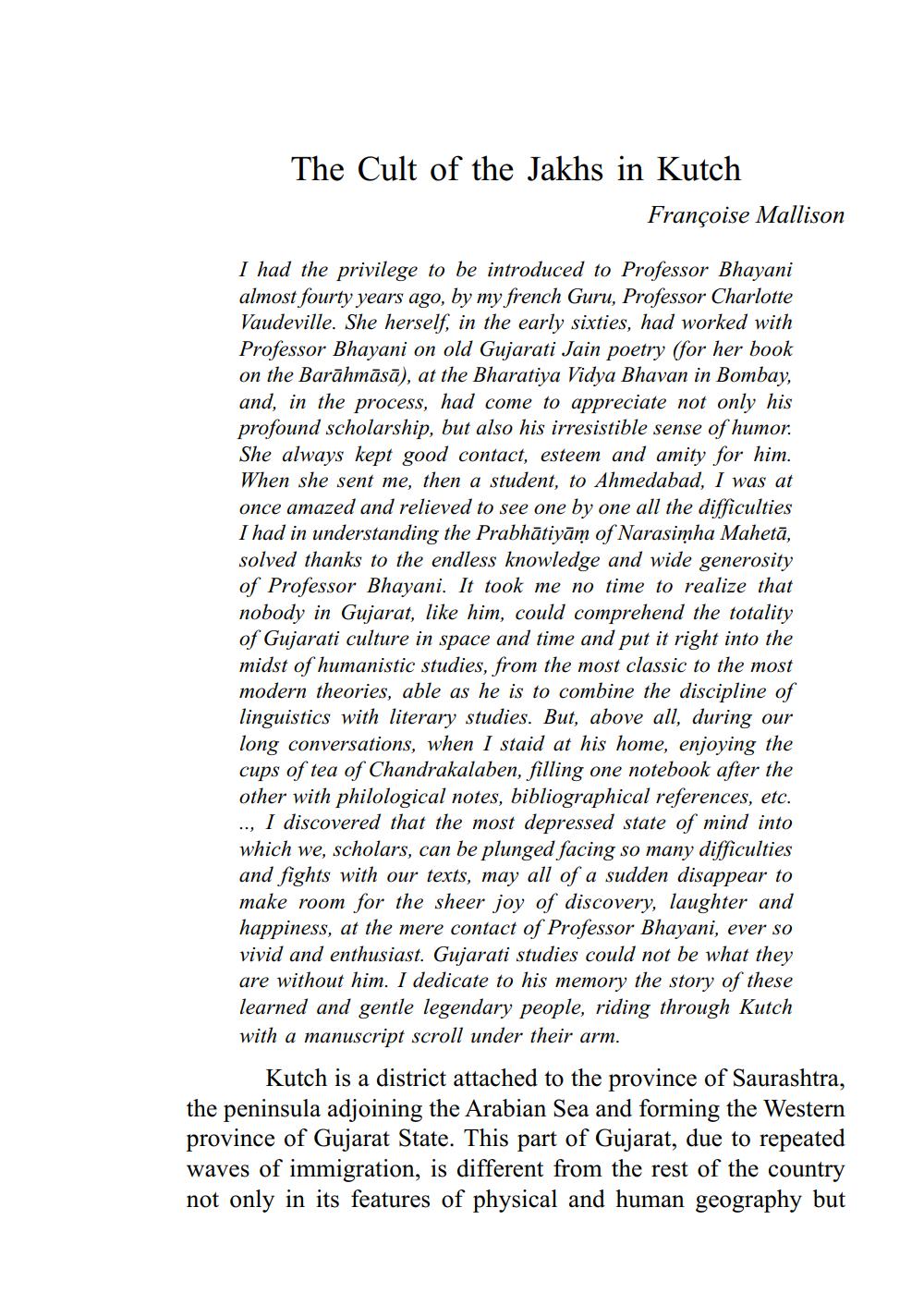________________
The Cult of the Jakhs in Kutch
...
Françoise Mallison
I had the privilege to be introduced to Professor Bhayani almost fourty years ago, by my french Guru, Professor Charlotte Vaudeville. She herself, in the early sixties, had worked with Professor Bhayani on old Gujarati Jain poetry (for her book on the Barahmāsā), at the Bharatiya Vidya Bhavan in Bombay, and, in the process, had come to appreciate not only his profound scholarship, but also his irresistible sense of humor. She always kept good contact, esteem and amity for him. When she sent me, then a student, to Ahmedabad, I was at once amazed and relieved to see one by one all the difficulties I had in understanding the Prabhatiyām of Narasimha Mahetā, solved thanks to the endless knowledge and wide generosity of Professor Bhayani. It took me no time to realize that nobody in Gujarat, like him, could comprehend the totality of Gujarati culture in space and time and put it right into the midst of humanistic studies, from the most classic to the most modern theories, able as he is to combine the discipline of linguistics with literary studies. But, above all, during our long conversations, when I staid at his home, enjoying the cups of tea of Chandrakalaben, filling one notebook after the other with philological notes, bibliographical references, etc.
I discovered that the most depressed state of mind into which we, scholars, can be plunged facing so many difficulties and fights with our texts, may all of a sudden disappear to make room for the sheer joy of discovery, laughter and happiness, at the mere contact of Professor Bhayani, ever so vivid and enthusiast. Gujarati studies could not be what they are without him. I dedicate to his memory the story of these learned and gentle legendary people, riding through Kutch with a manuscript scroll under their arm.
Kutch is a district attached to the province of Saurashtra, the peninsula adjoining the Arabian Sea and forming the Western province of Gujarat State. This part of Gujarat, due to repeated waves of immigration, is different from the rest of the country not only in its features of physical and human geography but




